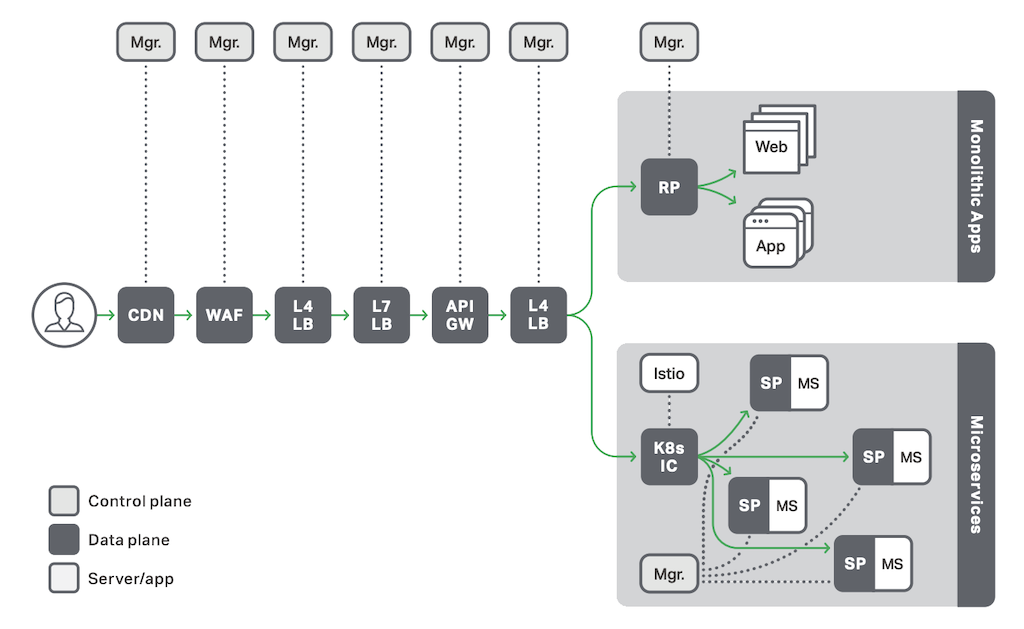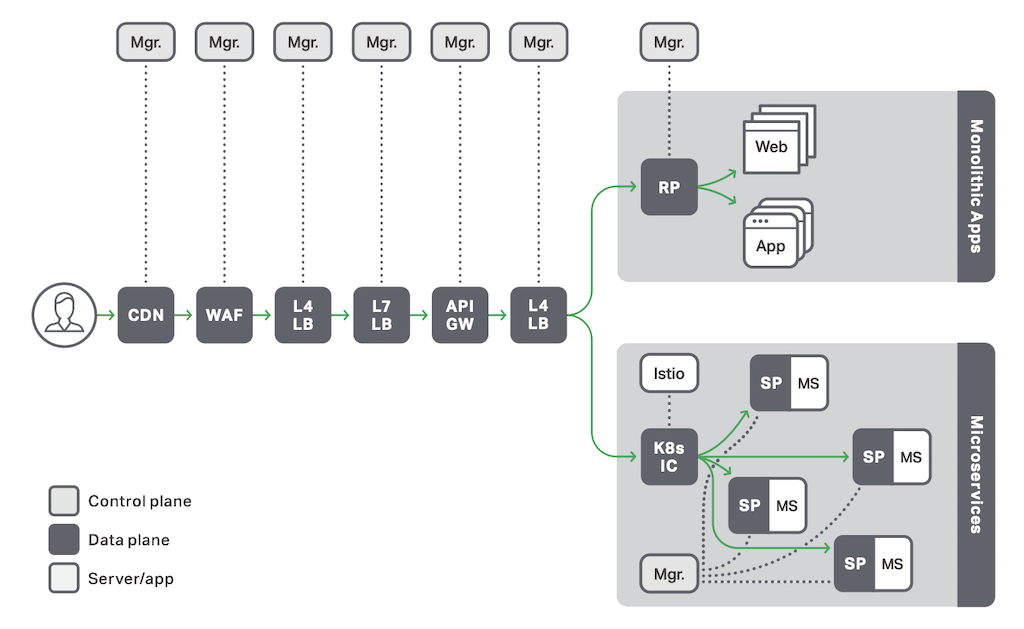How Not to Lose Your Customer in 3 Seconds

We have made the claim many times before, but it’s as true as ever: in our increasingly digital world, every company is now a tech company. We spend an average of 6 hours online every day, almost a third of our waking hours. And we expect instant page loading and responsiveness from the sites we visit – Pingdom found that 90% of users were willing to wait 3 seconds for a site to load before abandoning it, but that number dropped by nearly half in just 3 more seconds.
All this makes it more critical than ever for companies to get the digital experience right for their customers. When they do, however, the benefits can be huge; consumers are happy to spend at least 15% more for goods on a site that provides a seamless online experience. On the flip side, slow or inferior digital touchpoint can be disastrous – even way back in 2012, Amazon estimated that 1 second of load lag time cost them $1.6 billion in sales per year. For businesses, digital transformation is key to radically improving the customer experience, gaining a competitive advantage, and establishing new revenue sources.
Given how critical digital performance is to enterprises, what should they do to not lose a customer in 3 seconds?
Digital is Changing Our World at Incredible Speeds
First, let’s talk about how digital has taken over all aspects of our lives. Let me start with mundane tasks: everyone has probably taken advantage of two‑day, one‑day, or same‑day delivery of goods purchased online. Let me share some of my own everyday digital experiences – I can:
- Pay all my bills online or via a mobile app.
- Deposit checks via mobile app just by taking a picture of the check. No need to go into the bank or even to an ATM.
- Get my flight’s boarding pass via a mobile app. No need to wait in line at the airline’s check‑in desk, or bring print‑outs from home.
- Check in at a hotel. On one of my recent trips, my Marriott hotel’s check‑in desk was very crowded because a major convention was in town. I saved a lot of time by checking in on the easy-to-use mobile app. I even unlocked the door to my room using my phone’s Bluetooth.
- Schedule medical appointments and meet my doctor through my healthcare provider’s mobile app. I can reach my doctor faster if I book an appointment through the mobile app, as both of us connect virtually from our sofas. Going digital has literally provided me faster access to care.
These are just a few examples of how going digital is hugely convenient, saving time and effort, and – dare I say – improving our general standard of living, as well as helping the environment!
Digital has become so entrenched in our lives that we have begun to consider it as “tablestakes” and possibly even willing to overlook imperfections with the offline aspects of a digital transaction (such as a smaller hotel room). Our expectations have risen – any slowness or other fault in the digital experience, and we immediately switch to a competitor’s solution. For example, I recently booked another hotel that also had mobile check‑in capability, but they were not able to deliver my ‘mobile key’. Instead, I had to wait in line for almost half an hour just to check in. This hotel was otherwise decent, but next time, I’m going back to Marriott as the other hotel’s onboarding experience was thoroughly unsatisfactory. This dissatisfaction has been measured; according to a report by Ericsson, an interruption to streaming video of just a few seconds duration results in an anxiety level equal to watching a horror movie!
Modernizing Your Business Through Digital Transformation
How can enterprises accelerate digital transformation? Embracing a DevOps mindset is a good start. After that, the next step might be to modernize their infrastructure by adopting containers which lend themselves to cloud‑native app architectures. According to F5’s 2019 State of Application Services report, 87% of enterprises are adopting a multi‑cloud approach.
Modernizing applications using APIs and microservices is another important step in the digital journey. Microservices is an approach to software architecture that builds a large, complex application from multiple small components that each perform a single function, such as authentication, notification, or payment processing. Each microservice is a distinct unit within the software development project, with its own codebase, infrastructure, and database. The benefits are numerous; microservices‑based apps are easier to build, test, maintain, and scale, resulting in shorter development cycles. The report found that 86% of enterprises expect microservices to be the default architecture in the next 5 years.
Modernizing your infrastructure and applications doesn’t happen overnight or in one shot. To provide compelling digital experiences, enterprises need multiple application architectures. Some apps are traditional monoliths, while others are distributed microservices. But in most cases, a single app needs both architectures. The resulting application delivery infrastructures are highly complex, often incorporating numerous point solutions to improve application performance – load balancers, reverse proxies, content caches, SSL/TLS processors, bot detectors, and more.
Typical Application Delivery Infrastructures Are Too Complex
As depicted below, most enterprises stitch together content delivery networks (CDN), web application firewalls (WAF), Layer 4 (network) load balancers (L4 LB), Layer 7 (application) load balancers (L7 LB), and API gateways (API GW) to protect and scale traffic going in and out of apps. Each component adds latency, operational overhead, and cost.
On the backend, it’s not uncommon to see a multitude of reverse proxies (RP), app servers (App), and web servers (Web) for traditional apps, and Kubernetes Ingress controllers (K8s IC), sidecar proxies (SP), and microservices (MS) for newer apps.
Most of the frontend and backend component require their own dedicated management tool (Mgr), and might even be managed by different teams with different skill sets. This level of infrastructure sprawl drives high cost, complexity, and risk – making it impossible to bring new apps and services to market quickly.
Streamlining Your Application Infrastructure with F5 and NGINX
F5 and NGINX together offer a broad set of application services that simplify your application infrastructure.
NGINX is a lightweight, flexible, high‑performance, all-in-one software load balancer, WAF, reverse proxy, web server, content cache, and API gateway. NGINX powers over 400 million websites and more of the busiest 100,000 sites than any other web server. Over 3 million instances of NGINX instances are operating in production microservices environments.
The NGINX Application Platform is a suite of application development and delivery technologies that simplify application infrastructures. By providing application delivery, API management, and service mesh capabilities, it eliminates the need for multiple disparate solutions – dramatically lowering costs, improving application performance, boosting developer productivity, and speeding time-to-market for new services.
If we look at the same application infrastructure with F5 solutions in place, we see how F5’s rich app services serve as a front door for all the application traffic flowing into the enterprise. This includes global server load balancing, Layer 4 firewall, DNS delivery, and bot detection. NGINX Plus augments F5’s app services at the edge by collapsing Layer 7 load balancing, API gateway, reverse proxy, and basic WAF into a single, scale‑out software tier.
On the backend, NGINX Plus and NGINX Unit consitute a dynamic application infrastructure that eliminates the need for different servers, Kubernetes Ingress controllers, and sidecar proxies for east‑west traffic. NGINX Controller monitors and manages all this with an intuitive, graphical interface at scale across a multi‑cloud environment.
Innovate Without the Burden of Additional Complexity
Providing compelling digital experiences is key to not losing customers in 3 seconds, gaining a competitive edge and achieving scale quickly. As you modernize your infrastructure and applications, you also need modern application delivery and API management mechanisms to deliver high performance without introducing complexity and cost. Together, F5 and NGINX eliminate tool sprawl and simplify your application infrastructure architecture. To find out more, get in touch with our sales team.
The post How Not to Lose Your Customer in 3 Seconds appeared first on NGINX.
